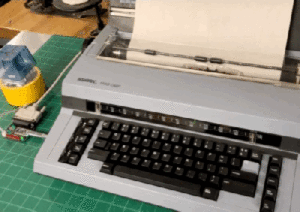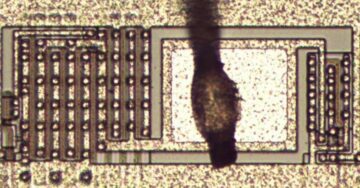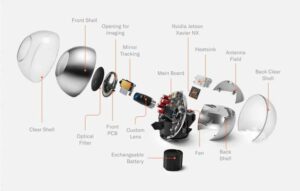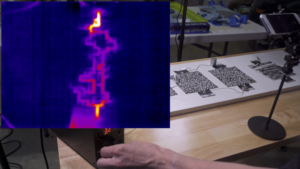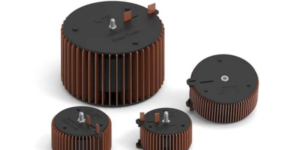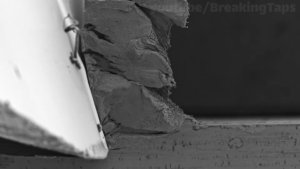
Will it or won’t it? That’s the question much on the minds of astronomers, astrophysicists, and the astro-adjacent this week as Betelgeuse continued its pattern of mysterious behavior that might portend a supernova sometime soon. You’ll recall that the red giant star in the constellation Orion went through a “great dimming” event back in 2019, where its brightness dipped to 60% of its normal intensity. That was taken as a sign that perhaps the star was getting ready to explode — or rather, that the light from whatever happened to the star 548 years ago finally reached us — and was much anticipated by skywatchers, yours truly included. As it turned out, the dimming was likely caused by Betelgeuse belching forth an immense plume of dust, temporarily obscuring our view of its light. Disappointing.
Those who gave up on the hope of seeing a supernova might have done so too fast, though, because now, the star seems to be swinging the other way and brightening. It briefly became the brightest star in Orion, nearly outshining nearby Sirius, the brightest star in the sky. So what does all this on-again, off-again business mean? According to Dr. Becky, a new study — not yet peer-reviewed, so proceed with caution — suggests that the star could go supernova in the next few decades. The evidence for this is completely unrelated to the great dimming event, but by analyzing the star’s long history of variable brightness. The data suggest that Betelgeuse has entered the carbon fusion phase of its life, a period that only lasts on the scale of a hundred years for a star that size. So we could be in for the ultimate fireworks show, which would leave us with a star brighter than the full moon that’s visible even in daylight. And who doesn’t want to see something like that?
Last week, we shared a wonderfully detailed diorama celebrating the 1983 movie WarGames, which featured the room where David Lightman nearly started World War III. The attention to detail was spectacular, especially for the tiny model IMSAI 8080 computer, complete with paddle switches and blinkenlights. It was a reminder of the time before the ubiquitous beige box crop of PCs, when machines had a soul, or at least a style. We’re reminded of this fact by this pictorial guide to computer history, which shows machines going back to the 1940s. If you can think of an important machine, it’s in this collection, along with some great computer-centric quotes. It’s not clear how photographer James Ball got such beautiful shots, but hats off to him for the effort.
At the risk of starting yet another war about metric vs. imperial/traditional/stone age measurement systems, we’ll just stipulate up front on this one that everyone else in the world is right, and we here in the US are wrong. Fine, you win. But, that doesn’t mean that we’re going to stop using our hogsheads and furlongs anytime soon, especially in the shop, where a lot of us have invested tons of money in fractional-inch tooling. Which is why we were happy to see this online converter that automatically finds the six fractional and letter-size drills that correspond to a given metric drill size. The really handy part is that the error is shown too, so you can judge when close enough is close enough. One quibble, though: We’ve never heard of a “1/5th” or “7/9th” drill bit. The fractional system may be screwy, but at least we keep out denominators to powers of two.
And finally, we stumbled across a video that highlights perhaps the most important building in the United States. The White House? The Pentagon? The NSA Utah Data Center? No, it’s One Wilshire Boulevard, an aggressively unattractive building in Los Angeles that is neither the first building on Wilshire Boulevard nor even actually on that road. But despite its appearance and confusing address, One Wilshire is home to some of the most expensive real estate in the United States. It’s a “carrier hotel,” a building that houses the infrastructure for major telecom carriers like Verizon, AT&T, and Sprint, as well as international carriers. There are also data centers for big players like Amazon, Google, and Netflix inside the dumpy 1960s skyscraper. The reason everyone wants in on One Wilshire is that it allows all these systems to easily interconnect to each other, plus it’s pretty close to the landings for a bunch of undersea cables. It’s an interesting look at a vital piece of Internet infrastructure.
- SEO Powered Content & PR Distribution. Get Amplified Today.
- EVM Finance. Unified Interface for Decentralized Finance. Access Here.
- Quantum Media Group. IR/PR Amplified. Access Here.
- PlatoAiStream. Web3 Data Intelligence. Knowledge Amplified. Access Here.
- Source: https://hackaday.com/2023/06/18/hackaday-links-june-18-2023/
- :has
- :is
- :not
- :where
- $UP
- 2019
- 2023
- a
- About
- across
- actually
- address
- age
- ago
- All
- allows
- along
- also
- Amazon
- amp
- an
- analyzing
- and
- Angeles
- Another
- Anticipated
- ARE
- AS
- At
- AT&T
- attention
- automatically
- back
- ball
- BE
- beautiful
- became
- because
- before
- Big
- Bit
- Box
- briefly
- brighter
- brightest
- Building
- Bunch
- business
- but
- by
- cables
- CAN
- carbon
- carriers
- caused
- caution
- Celebrating
- Center
- Centers
- clear
- Close
- collection
- complete
- completely
- computer
- confusing
- content
- continued
- could
- crop
- data
- Data Center
- data centers
- David
- daylight
- decades
- Despite
- detail
- detailed
- disappointing
- does
- Doesn’t
- done
- dr
- Dust
- each
- easily
- effort
- else
- embedded
- enough
- entered
- error
- especially
- estate
- Even
- Event
- everyone
- evidence
- expensive
- fact
- FAST
- featured
- few
- Finally
- finds
- fine
- fireworks
- First
- For
- forth
- fractional
- from
- front
- full
- fusion
- getting
- giant
- given
- Go
- going
- great
- guide
- had
- handy
- happened
- happy
- Have
- heard
- here
- highlights
- him
- history
- Home
- hope
- hotel
- House
- houses
- How
- HTML
- http
- HTTPS
- hundred
- if
- iii
- immense
- important
- in
- included
- Infrastructure
- inside
- interesting
- International
- Internet
- invested
- IT
- ITS
- jpg
- judge
- june
- just
- Keep
- least
- Leave
- Life
- light
- like
- likely
- links
- Long
- Look
- los
- Los Angeles
- Lot
- machine
- Machines
- major
- May..
- mean
- measurement
- metric
- might
- minds
- model
- money
- Moon
- most
- movie
- much
- mysterious
- nearly
- Neither
- Netflix
- never
- New
- next
- no
- nor
- normal
- now
- of
- off
- on
- ONE
- online
- only
- or
- Other
- our
- out
- part
- Pattern
- PCs
- peer-reviewed
- pentagon
- perhaps
- period
- phase
- photographer
- piece
- plato
- Plato Data Intelligence
- PlatoData
- players
- plus
- powers
- pretty
- question
- quotes
- rather
- reached
- ready
- real
- real estate
- really
- reason
- Red
- right
- Risk
- road
- Room
- Scale
- see
- seeing
- seems
- shared
- Shop
- show
- shown
- Shows
- sign
- SIX
- Size
- sky
- skyscraper
- So
- some
- something
- Soon
- Soul
- spectacular
- Sprint
- Star
- started
- Starting
- States
- Stop
- Study
- style
- such
- suggest
- Suggests
- supernova
- system
- Systems
- taken
- telecom
- than
- that
- The
- the world
- There.
- These
- think
- this
- this week
- though?
- Through
- time
- to
- tons
- too
- true
- truly
- Turned
- two
- ubiquitous
- ultimate
- United
- United States
- us
- using
- utah
- Verizon
- View
- visible
- vital
- vs
- want
- wants
- war
- was
- Way..
- we
- week
- WELL
- went
- were
- What
- whatever
- when
- which
- white
- White House
- WHO
- why
- win
- with
- world
- World War III
- would
- Wrong
- years
- yet
- you
- youtube
- zephyrnet

